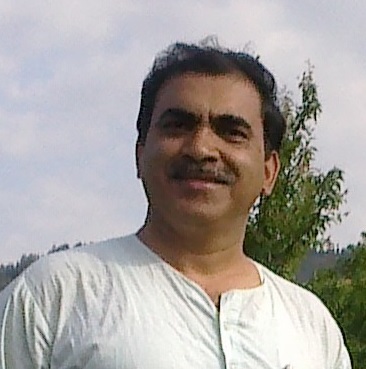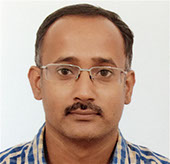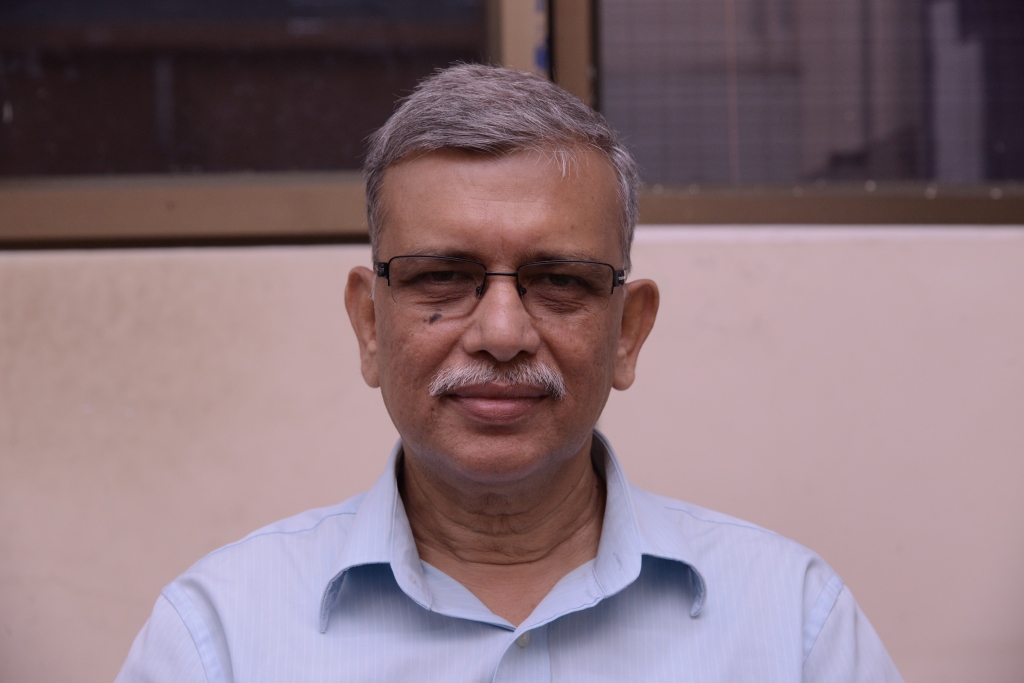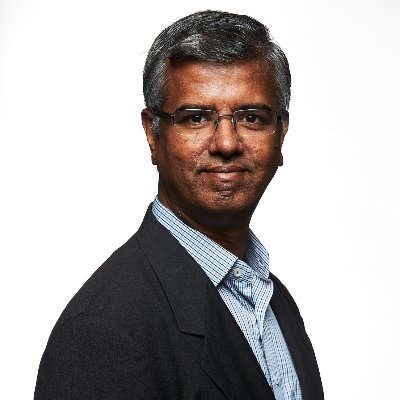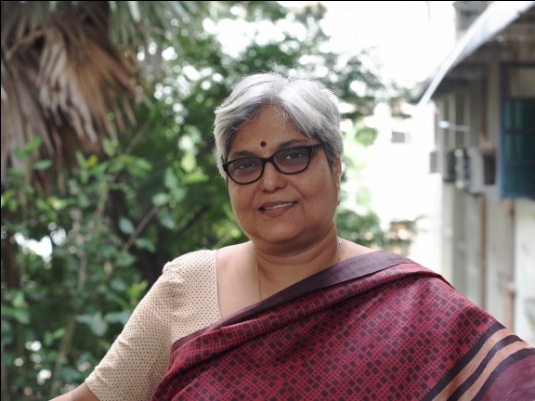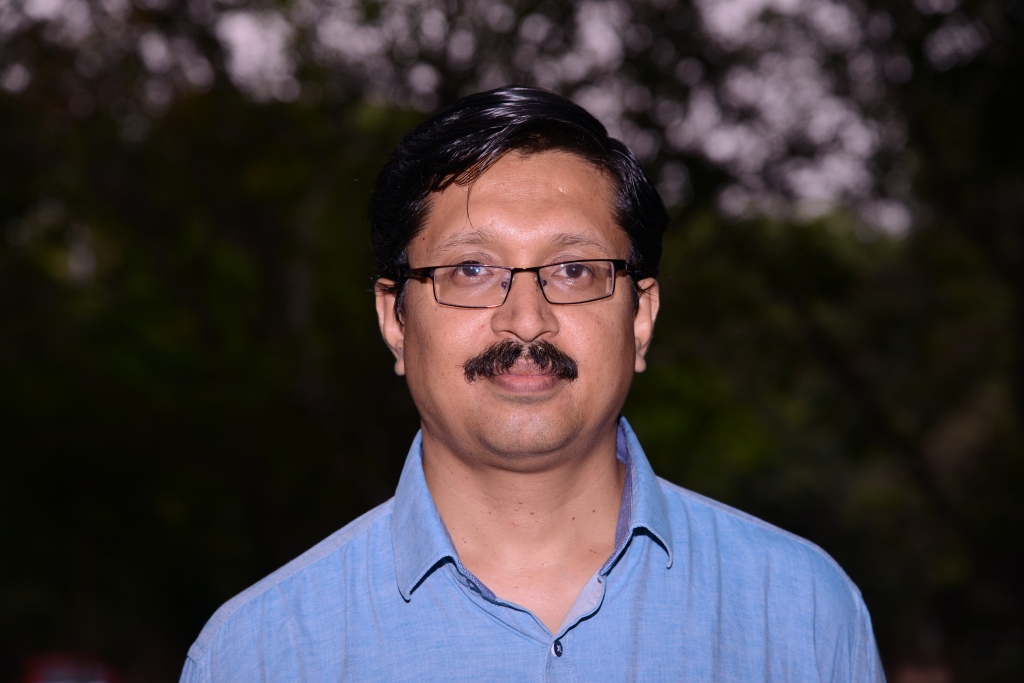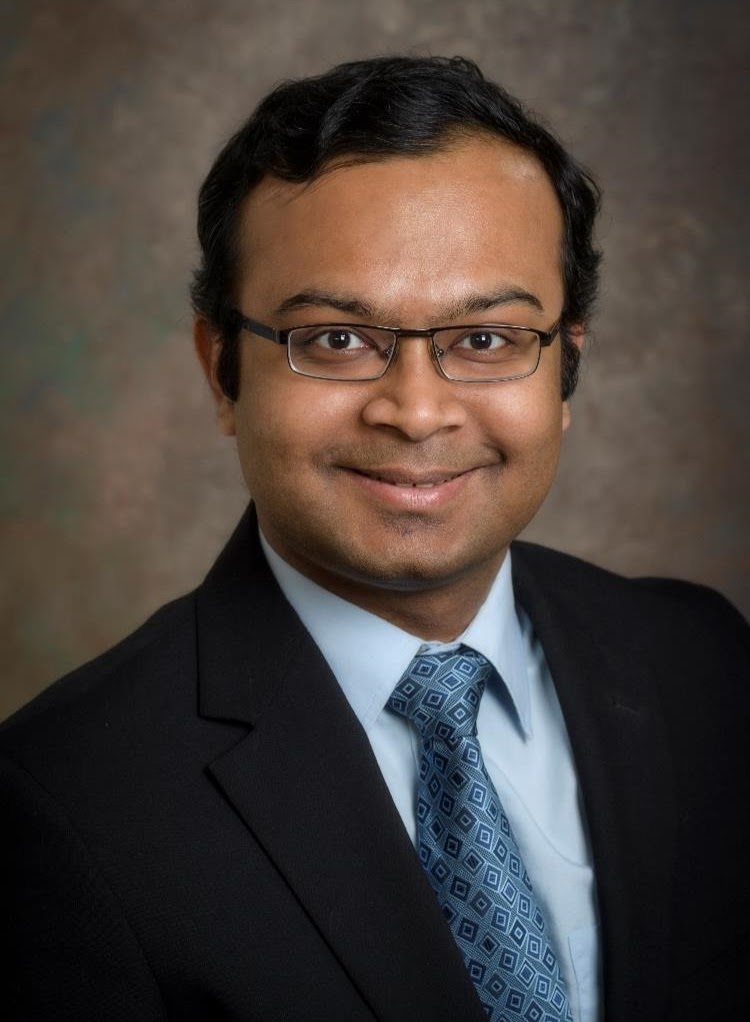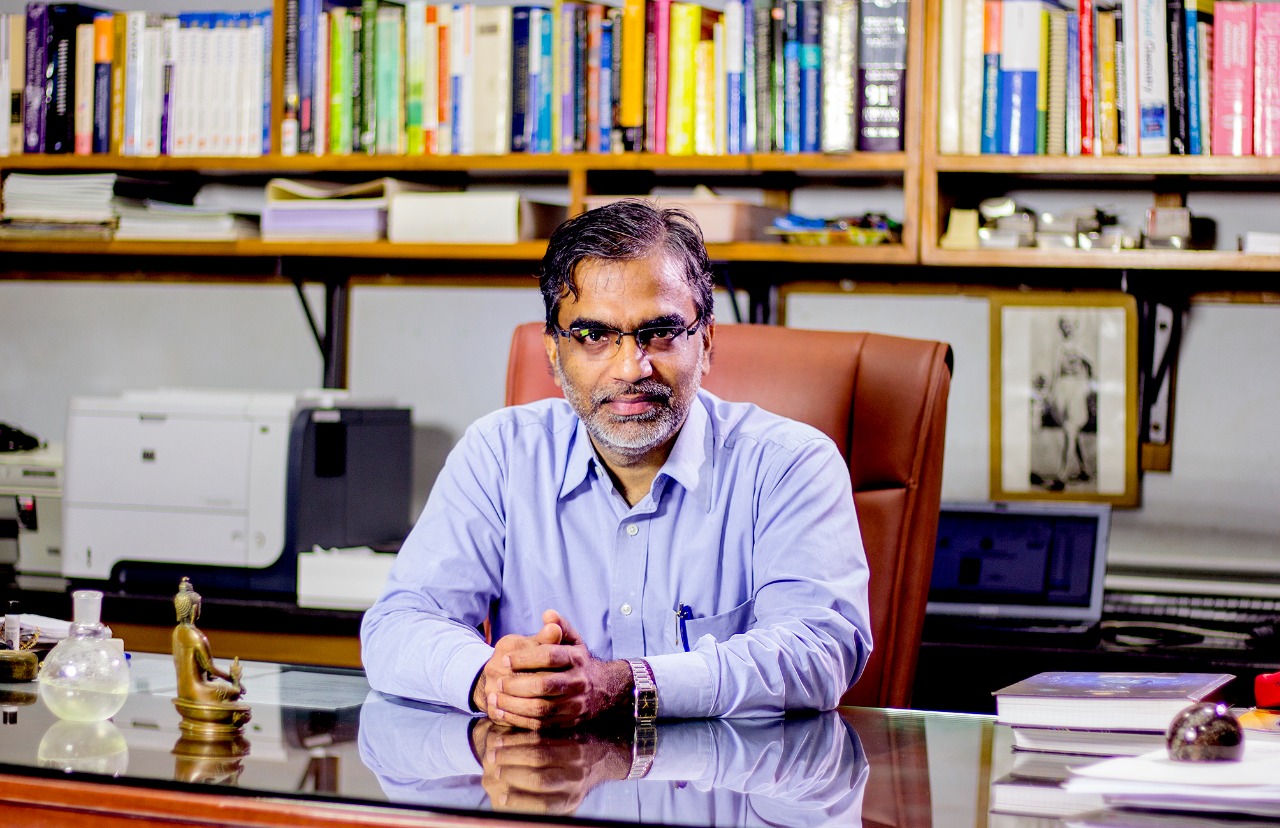Project
Theme 1: Whispering Gallery Modes (WGM)-based Bio-chemical sensing
In a microcavity based sensor, because of the resonant recirculation of whispering gallery mode (WGM) within a microcavity, the light will sample the target molecules a large number of times, decided by the Q-factor. Despite its high sensitivity (high Q-factor), microspheres have the limitation in integration with other optical components and the excitation of WGM needs evanescent couplers (tapered fibres, waveguides or prisms). On the other hand, microbottle resonators (MBRs) can be excited and the signal may be extracted through the fibre stems attached to it, making it simple and robust. Such a platform will be used for biochemical sensing through surface functionalization using 2D materials. In collaboration with Southampton, the IITM team has recently demonstrated microbottle resonators for temperature sensing [1], and obtaining high Q-modes with self-assembly [2]. We will also attempt to integrate the sensor with an all-fiber fiber coupler [3].

Figure Courtesy: F. Vollmer, S. Arnold, Nature Methods 5, 591 (2008)
IIT Madras Team:
- Profs. Prem Bisht, Balaji Srinivasan, B.N. Shivananju, T. Pradeep
International Collaborators:
- Dr. Senthil Ganapathy (University of Southampton, UK)
- Prof. Ravi Jain (University of New Mexico, USA)
- Prof. Surendra Singh (University of Arkansas, USA)
- Prof. John Canning (University of Technology Sydney, Australia)
- Prof. Stephen Arnold (New York University, USA)
References:
- [1] S. Bhattacharya, A.V. Veluthandath, C.C. Huang, G.S. Murugan , P.B. Bisht, J. Opt. 22, 105003 (2020)
- [2] AV Veluthandath, S. Bhattacharya, G.S. Murugan, P.B. Bisht, IEEE Photon Tech Lett. 31, 226 (2019)
- [3] P. Shankar, P. Srinivas, P. Gregg, S. Ramachandran, G. Brambilla, B. Srinivasan, Opt Lett. 42, 4347 (2017)
Theme 2: MULTIPHOTON FLIM MICROSCOPY FOR SINGLE-PHOTON DETECTORS AND BIOMEDICAL RESEARCH:
The technique of fluorescence lifetime imaging (FLIM) is to be used for characterizing the layers of materials in all the subthemes. The phenomenon of Forster resonance energy transfer (FRET) is to be used for imaging in model systems, fluorescent probes & biological systems Dynamic imaging of protein-DNA assemblies governing bacterial stress response

IIT Madras Team:
- Shantanu Pradhan, Athi N. Naganathan, Edamana Prasad, Ashok K. Mishra & Prem B. Bisht
International Collaborators:
- Prof.Aravind Ghosh IISc, (Bangalore)
- Dr.Gurvinder Singh, University of Sydney
- Dr.Yogambha Ramaswamy, University of Sydney
- Prof.Amasi Periasamy, University of Virginia, USA
- Dr. Radhan Ramdass, MPI for Heart and Lung Research (Bad Nauheim, Germany)
References:
- [1]L.M. Hirvonen, et al., J. Biophotonics. 13 (2020) e201960099.
- [2] K. Roy et. al., Adv. Mater. 30 (2018) 1704412.
- [3] Wallrabe, H., & Periasamy, A. (2005). Current opinion in biotechnology, 16(1), 19–27.
Theme 2: Dynamic Imaging of Protein-DNA Assemblies Governing Bacterial Stress Response:

IIT Madras Team:
Athi N. Naganathan, Shantanu Pradhan, Edamana Prasad, Ashok K. Mishra & Prem B. Bisht
International Collaborators:
Dr. Gurvinder Singh, University of Sydney Dr.Yogambha Ramaswamy, University of Sydney Prof. Amasi Periasamy, University of Virginia, USA
Theme 3: 3D Multiphoton-based Volumetric Imaging of Engineered Synthetic Tissues:
3D Multiphoton-based volumetric imaging of engineered synthetic tissues. To study multifunctional plasmonic-nanosystems for imaging by synthesizing nanomaterials with desired combination of multiphoton and FRET properties. Also to develop next-generation carbon nanomaterials for high performance clinical near infrared multiphoton deep-tissue imaging.

IIT Madras Team:
- Shantanu Pradhan, Athi N. Naganathan, Edamana Prasad, Ashok K. Mishra & Prem B. Bisht
International Collaborators:
- Dr. Gurvinder Singh, University of Sydney
- Dr.Yogambha Ramaswamy, University of Sydney
- Prof. Amasi Periasamy, University of Virginia, USA
References:
- [1]S. Sahu, P. Talele, B. Patra, R. Verma and A. K. Mishra (2020) Langmuir, 36, 17, 4842–4852
- [2] A. Narayan, S. Gopi, B. Lukose & Athi N. Naganathan (2020). J. Mol. Biol., 432, 4830-4839
- [3] S Pradhan, et. Al. . Advanced Healthcare Materials 9 (8):1901255.
- [4] A. Narayan, S. Gopi, D. Fushman & Athi N. Naganathan (2019). Nat. Commun., 10, 1995
Theme 4: OPTICAL MEMS AND METASURFACES FOR IMAGING AND SENSING:
Key Tasks of Phase I: (i) Development of a MEMS mirror for microendoscopy: Design Process flow, optimization, Fabrication Testing, (ii) Design of sub-systems that form part of and improve: Optical Design (Optics includes conventional and metasurface elements) Metasurface element design Metasurface element fabrication

IIT Madras Team:
- Shanti Bhattacharya, Enakshi Bhattacharya, Balaji Srinivasan
International Collaborators:
- Prof. Sumeet Mahajan, Univ. of Southampton, UK
- Prof. Saulius Juodkazis, Swinburne Univ. of Tech., Australia)
References:
- [1] R. Dharmavarapu, S. H. Ng, F. Eftekhari, S. Juodkazis, and S. Bhattacharya, Opt. Express 28, 3505-3516 (2020).
- [2] R. Dharmavarapu,S. Bhattacharya, S. Juodkazis, Nanophotonics, 8, no. 7 pp. 1263-1270 (2019).
- [3] K. A. G. Prakash, S. Dhabai, E. Bhattacharya and S. Bhattacharya, IEEE Sensors, 11, 1019-1025 (2011).
Theme 5: Optogenetics and Neural Imaging:
Optogenetics is the latest discovery in neuroscience, in which brain signals are controlled by photons [1]. We can access the brain neurons externally by using neural interfaces, such as micro-electrocorticography (micro-ECoG), to detect and record high-quality neuron signals from the brains of patients suffering from multiple neural disorders to provide therapy [2]. In this project, we will develop microECoG arrays composed of graphene and related 2D materials due to its many advantages, such as flexibility, biocompatibility, broadband transmission, high thermal and electrical conductivity, high mechanical strength, and tunable optoelectronic properties [3].

Figure Courtesy: Nature Communications 5, 5258, 2014
IIT Madras Team:
- B.N. Shivananju, Balaji Srinivasan
International Collaborators:
- Prof. Kristian Helmerson (Monash University, Australia)
- Prof. Qiaoliang Bao (The Hong Kong Polytechnic University, Hong Kong, P. R. China)
References:
- [1] E.S.Boyden, F. Zhang, E. Bamberg, G. Nagel, K. Deisseroth, Nature Neuroscience 8, 1263, 2005.
- [2] D. W. Park, et al.,Nature Communications 5, 5258, 2014.
- [3] B. N. Shivananju et al, Advanced Functional Materials, 27, 1603918, 2017.
Theme 6: Polariton, Nano-FTIR, and Nano-Raman based Biochemical Fingerprints:
In this project, we would like to explore the polariton, Nano-FTIR, and Nano-Raman as an enhancing mechanism of biochemical (single molecule detection) sensors based on 2D materials operating in the MID-IR spectral range [1, 2]. The extreme spatial light confinement in graphene and related 2D materials can produce an unprecedentedly high overlap with biomolecules, enabling superior sensitivity in the detection of their refractive index and vibrational fingerprints for medical and healthcare applications [1, 3].

Figure Courtesy: Daniel Rodrigo, et al., Science 349 (6244), 165-168, 2015.
IIT Madras Team:
- B.N. Shivananju, Balaji Srinivasan
International Collaborators:
- Prof. Kristian Helmerson (Monash University, Australia)
- Prof. Qiaoliang Bao (The Hong Kong Polytechnic University, Hong Kong, P. R. China)
References:
- [1] Daniel Rodrigo, et al., Science 349 (6244), 165-168, 2015.
- [2] Q. Xu, B. N. Shivananju, Qiaoliang Bao, et al., Light: Science & Applications 6, 16204, 2017.
- [3] B. N. Shivananju et al, Advanced Functional Materials, 27, 1603918, 2017.

Our vision is that the above enablers are not only key for the above mentioned biochemical sensing and imaging applications, but will also sprout exciting new modalities that solve many more complex problems in allied areas. A few example solutions provided by the above enablers are as follows: (1) develop specific label-free detection of clinically relevant biochemical molecules with the limit of detection upto atto-Molar (aM) concentration, which will be 10 times higher than those of existing biochemical sensors, (2) develop the world’s fastest (10-12 -10-15 sec) biochemical sensing devices for fast-track healthcare monitoring, (3) develop subdiffraction limited imaging with the resolution of below 10 nm for spectroscopy or biochemical fingerprints applications for the single-molecule or single virus detection, (4) develop state-of-the-art diagnostic imaging tools that combine the latest technologies to achieve high resolution, large field of view, in-vivo deep imaging, (5) develop 3D micro-structured patterns on fiber tips for advanced light/matter interactions.
Although proof of concept demonstrations have been independently carried out in the above areas, several of them are laboratory experiments and are not feasible for practical applications. One of the key goals of the proposed CoE is to engineer solutions that are based on the above enablers, which can be subsequently transferred to the industry. Some of the key research themes that will be pursued through the CoE are shown in the Figure below, and consists of: (1) Whispering Gallery Mode (WGM) based biochemical sensing, (2) Multi-photon Fluorescence Lifetime Imaging Microscopy (FLIM), (3) Optical metasurface endoscopy, (4) Optogenetics and neural imaging, (5) Nano-FTIR and nano-Raman fingerprints, and (6) Multi-functional deep tissue imaging.
The CoE brings together a diverse team of faculty with a vast level of experience (>100 man years) in the enabling technologies, both from science and engineering backgrounds. We also intend to leverage off our research collaborations within and outside India. Specifically, we will foster working relationships with several top groups around the world on the above research themes, including joint PhD guidance and publications. We will be offering a joint Masters program on Biochemical Sensing and Imaging with the help of our foreign collaborators to develop skilled manpower. We also plan to leverage our ties within the IITM R&D ecosystem such as HTIC, ICCW, and Pravartak Technologies to usher our technologies out of our laboratories.
Expected deliverables of the research
- Novel optical microresonator platform based on whispering gallery modes and 2D material surface functionalization for bio-chemical sensing
- Fluorescence lifetime imaging (FLIM) and Forster resonance energy transfer (FRET) for bio-chemical imaging
- MEMS-based microendoscope with large FoV and improved imaging quality using flat optics.
- 2D materials based carbon-layered electrode array technology for optogenetics and neural imaging applications.
- Polariton, Nano-FTIR, and Nano-Raman for nano-scale bio-chemical fingerprints.
Final output:
- International journals publications
- Manpower development
- Internationalization
- a. Collaborations
- b. International education programs
- c. International conferences and workshops
- Industrial collaborations and product developments
Current status
Current status of FRET and FLIM: The expertise to work on FRET on model fluorescent probes and biological samples with the help of time-resolved spectroscopy is available with the coordinators. The access to FLIM is available with the collaborators in US.
Current status of multiphoton deep Tissue imaging: The multifunctional plasmonic nano systems are being synthesised at IIT Madras and University of Sydeny. The multiphoton emission properties of the newly synthesized materials is routinely done at IIT Madras. The deep tissue imaging technology is available with the collaborators at Univ of Sydney.
Collaborations
International Collaborations

WGM-based platform for biochemical sensing
- Prof Frank Vollmer, University of Exeter, UK
- Prof. Stephen Arnold, New York University (US)
- Dr Senthil Ganapathy, University of Southampton, UK
- Prof Xiao, State Key Laboratory, Peking University, China
- Prof. Ravi Jain, Univ of New Mexico
Multiphoton FLIM microscopy, Optical beams and deep tissue imaging
- FLIM and multiphoton imaging, Delaware Biotechnology Institute, USA
- Prof. Perisamy,W.M. Keck Center for cellular imaging, University of
Virginia, USA - Prof. Surendra Singh, Arkansas
- Dr. Ramdas Radhan, Germany
- Dr. Yogamba Ramaswamy, Dr. Gurvinder SIngh, Sydney
Optical MEMS and Metasurfaces for Imaging and Sensing
- Prof. Sumeet Mahajan, University of Southampton, UK
- Prof. Saulius Juodkazis, Swinburne Univ. of Tech., Australia
Optogenetics and Neural Imaging
- Prof. Kristian Helmerson, Monash University, Australia
- Prof. Qiaoliang Bao, The Hong Kong Polytechnic University, China
Nano-FTIR and Nano-Raman for Bio-Chemical Fingerprints
- Prof. Kristian Helmerson, Monash University, Australia
- Prof. Qiaoliang Bao, The Hong Kong Polytechnic University, China
External international site links for project
International education programs
As part of the CoE activities, we plan to offer a Master’s course on bio-chemical sensing and imaging with active participation from faculty in the departments of EE, AM, BT and CL. While it may not be possible to start an in-person course immediately, it is proposed to be initially run through NPTEL-like courses. A basket of such courses will be proposed and any student who takes a certain number from the basket could be awarded a degree. Lab courses that involve training on software tools could be included as well. Balaji and Shanti have already recorded NPTEL courses titled Introduction to Photonics and Optical Engineering respectively. The latter has a large optical design component, which can be carried out in a virtual class. The advantage of the virtual courses is that students from other countries could enrol and this will be encouraged through the collaboration of this project. During Phase II, the course will evolve to include experimental courses using the well-developed infrastructure of the Departments of Physics and Electrical Engineering.
Industrial collaborations
The main aim of this project is to develop sensing and imaging technologies for civic and healthcare applications. The microendoscope project intends to develop an endoscope that will use advanced imaging for diagnostic purposes. We are in conversation with cardio and gastro surgeons to understand their needs, as well as the problems faced with current devices. It is the aim of this group to develop a device that can be used in the Indian scenario. We would like to hire post-docs interested in creating a spin-off company that could take this to product development. We will also explore working with companies interested in a transfer of technology. We also plan to leverage our ties within the IITM R&D ecosystem such as HTIC, ICCW, and Pravartak Technologies to usher our technologies out of our laboratories.
Societal impact
Water pollution is an added threat to water-stressed countries such as India and with increased population and rapid industrialisation, contamination at the field level is on the rise. As per the information provided by Indian water resources ministry in late 2017, about 240 million people across 21 states in India are drinking water with unacceptably high levels of Arsenic. The states such as Assam, Bihar, West Bengal and Uttar Pradesh in the Ganges-Brahmaputra river basin are the worst affected with lethal levels of Arsenic affecting about 50% of the population. The World Health Organisation warned that long-term exposure to arsenic from drinking water can cause cancer, skin lesions, cardiovascular disease and diabetes. In-utero and early childhood exposure has been linked to negative impacts on cognitive development and increased deaths in young adults. Hence, it is important to analyze the pollutants in water qualitatively and quantitatively to identify the sources of contamination and to treat the water accordingly. It is vital to provide “point-of-need” diagnostics e.g. when digging a well, one needs to sample the water at that depth since the chemistry changes significantly by the time the water is drawn to the surface and in addition to that dissolved oxygen should be measured at the deep regions as they facilitate a lot of chemical reactions with pollutant chemicals.
Any technology development that relates to healthcare will impact society. In countries with a history of medical technology research and product development, impact can be measured in terms of improved or new medical tools. India’s biggest problem is that almost all medical technology is imported. It is only recently that institutes, such as HTIC are taking up development of much-needed technology within the country itself. Something as commonplace as the pulse oximeter was until the pandemic only imported. Even now only a few companies actually produce these within the country. As with many medical devices, the hardware is only one part of the system. Analysis of the data is also crucial, as the data can vary greatly for people of different nationalities. Therefore, any indigenous healthcare technology development ensures that the unique needs and specific problems of our country will be considered. This project will have impact in several ways. Firstly, the advanced technologies are fairly expensive. The cost will become prohibitive if the only way to access these technologies is to import them. By developing them within the country, we will increase the probability of products reaching a larger number of hospitals, and therefore, people. Secondly, the technologies will be tailored to local needs. Impact in the short term (< 2yrs): To create a network of doctors to understand their needs and incorporate the same into our technologies. We have already started this conversation with Dr. R. Anto Sahayaraj, cardiothoracic surgeon, Global Hospitals, Chennai and Dr. Rajiv Santhosham, Cardio Thoracic Surgeon, Santhosham Chest Hospital, Chennai. We believe this centre and the work that we will do will provide doctors confidence that such technologies can be developed within the country. This is crucial to getting their inputs on what is needed.
Medium term (< 5yrs): Have prototypes of different imaging devices that can be tested locally, eg a microendoscope with two-photon imaging capability.
Long term: Spin-off companies that develop and produce less expensive advanced imaging systems that are customized to meet specific Indian needs.
Sustenance statement
Sustenance of any facility is crucial in order to keep the equipment and tools running and available for use for many years to come. One advantage of the proposed work is that only a small number of sophisticated tools are to be purchased and therefore, will require sustenance funds. The direct laser writing (DLW) system for example does not even need to be in a clean room. Apart from maintenance costs, the running costs will basically need to cover the consumables associated with each machine. This is true for several of the systems to be purchased. There are several plans to cover costs such as annual maintenance and consumable costs.
- Given the strong societal need for bio-chemical sensing and imaging, we expect that the developed technologies will be useful to several companies and state governments. Technology or IP could be leased or licensed to industries to generate revenue.
- Industry participation is also expected to bring in funds for joint ventures.
- Consumable costs will be recovered from users of the system. We already have faculty members of IITM, not directly associated with this proposal, who are interested in use of the equipment. The number of users could be substantial, as usage need not be limited to the research themes of this proposal. Again, taking the DLW as an example, apart from the field of optics, it has applications in Integrated photonics, Microfluidics, Direct rapid prototyping, Micromechanics & MEMS, Life sciences and Material engineering. Clearly, this equipment would be attractive to a wide range of faculty from different departments. It is to be mentioned that our colleagues Prof. Kasi Viswanathan (PH), Prof. Indrapal Singh (CH), Prof. Madhilita Dixit & Prof. Amal Kant Bera (Both BT) and Prof. Chandra Sekhar (CS) have agreed to take part in the activities of this proposal.
- The PIs have demonstrated a stellar record in attracting research funding to the tune of INR 30 Crores. We will continue such practices, earmarking some funds from new projects for running and maintenance costs of this centre.
- PIs will continue to focus on generating IP with the purchased and developed technologies.
- Spinoff companies would be encouraged to become vehicles of translational research that provide more funding to the CoE in the long run.
Technical/ Scientific Progress
New work done in the project
- Simulations of whispering gallery modes in microbottle resonators using COMSOL (EE)
- Simulating Microcavity resonances for energy transfer studies (PH)
- Purified the thermo- and osmo-sensory protein H-NS from E. coli. Currently spectroscopic measurements are being carried out to probe for oligomerization and osmolarity effects. We will be initiating the purification of MvaT, an orthologous protein from Pseudomonas aeruginosa [BT]
- Synthesized poly(ethylene glycol diacrylate)-fibrinogen hydrogels for tissue-mimetic scaffolds and conducted characterization studies to quantify conjugation efficiency. These hydrogels will be used to fabricate millimetre-scale tissues as models of cancer, fat tissue and blood vessels and will be used for 3D volumetric imaging [BT]
- Design of multi-wavelength dielectric metasurfaces using finite element software (COMSOL and Lumerical) [EE]
- Simulation and design of experimental work started for optogenetics and polaritons based biosensors [EE]
Infrastructure developments
- Development of experimental setup for excitation of whispering gallery modes in microbottle resonators using beams with orbital angular momentum. The new Spatial light modulator has been purchased and installed. [EE]
- The newly purchased Tunable laser and power have been installed for micro cavity research. The software has been updated and the measurement set up is being calibrated [PH]
- Installed and operationalized an inverted fluorescence automated microscope with z-stack imaging capabilities for thick specimens, currently located in Dept. of Biotechnology, Common Instruments Facility with funding support from ICSR; Additionally, process is underway to set up confocal microscope in Dept. of Biotechnology using DST-FIST funding. [BT]
- Purchase order is released for “Two-dimensional materials transfer system”. [EE]
- The financial bid for the remaining equipment Ultrafast FBG Interrogator has been processed. The order is to be released soon. [EE]
Output
- Oral presentation at SPIE Photonics West conference [Balaji]
- Review paper on optical diagnostics for viral detection (manuscript being prepared) [Balaji and Shivananju]]
- A review article on “WGMS and applications” is under preparation. [Prem]
- A text book is accepted by IoP, to be submitted by March 2022 [Prem]
Publications in Journal and conferences:
- Jerin Geogy George, Susan Thomas and Shanti Bhattacharya,“ Design of multi-wavelength dielectric metasurfaces using finite element software”, Asian Journal of Physics, SSN:0971 - 3093, 30, (4), April 2021
- Gurvinder Singh, Tulika Agrawal; Pooria Lesani; Prem B Bisht, and Hala Zreiqat, Tuning the size, concaveness, and aspect ratio of concave cubic gold nanoparticles produced with high reproducibility, Materials Today Chemistry 23 (2022) 100657. Link
- Vijay Kumar Sagar, Soumyodeep Dey, Tulika Agrawal, Pooria Lesani, Yogambha Ramaswamy, Gurvinder Singh, Hala Zreiqat , and Prem Ballabh Bisht, Probing Heteroatoms Co-Doped Graphene Quantum Dot for Energy Transfer and 2-Photon Assisted Applications, J. Photochemistry & Photobiology, A: Chemistry 423 (2022)113618-113628. Link
- Gurvinder Singh, Hesamodin Jami, Pooria Lesani, Shubhayan Bhattacharya, Yogambha Ramaswamy, Prem B Bisht, Hala Zreiqat,, Evolution of stellated gold nanoparticles: new conceptual insights into controlling the surface processes, Nano Research (2021), Link
- S. Prakash, S. Sahu , S. Bhattacharya . P. B. Bisht . A. K. Mishra, Carbon Dot−NaCl Crystals for White‐Light Generation and Fabry‐Perot Lasing, Chem. Asian J. 16 (2021) , 783-792
- Co-authored by Shantanu, Pulsed laser assisted high-throughput intracellular delivery in hanging drop based three dimensional cancer spheroids, Analyst 2021, DOI: 10.1039/d0an02432e
- Co-authored by Shivananju, Infrared Polaritonic Biosensors Based on Two-Dimensional Materials, Molecules, 26 (15), 4651, 2021.
- Co-authored by Shivananju, Soft X‐ray Detectors Based on SnS Nanosheets for the Water Window Region, Advanced Functional Materials, 2105038, 2021.
- Co-authored by Shivananju, A graphene-Mo2C heterostructure for a highly responsive broadband photodetector, Physical Chemistry Chemical Physics, 23 (40), 23024-23031, 2021
- Tulika Agrawal and Prem B. Bisht, “Time Resolved Microscopy of Luminescent Nanodiamonds-Microcavity System”, Focus on Microscopy 2021 (FOM 2021), 28-31 March.
- Tulika Agrawal, Soumyodeep Dey, Shubhayan Bhattacharya, and Prem B. Bisht, “Photonic nanojet array for waveguide applications”, Frontiers in Optics & Photonics 2021 (FOP21), 24-27 September, IIT Delhi.
- Tulika Agrawal and Prem B. Bisht, “Femtosecond dephasing time estimates due to cavity modified spontaneous emission”, Ultrafast Science (UFS-2021), 12-14, November, Mumbai.
- Sugandh Sirohi, Vijay Kumar Sagar and Prem Ballabh Bisht, “Heteroatom-doped graphene quantum dots for sensing and imaging applications”, National Symposium on Radiation and Photochemistry (NSRP-2021), 25-26, June, IIT Gandhinagar.
- Following 10 presentation were made in “IIT Madras – University of Sydney Translational Health Science Joint Workshop (2021), 15-16 March”
-
Prem B Bisht, Activities in Sensing and Imaging
-
Dr. Shanti Bhattacharya, Generation of Complex Light for Imaging Applications
-
Dr. Athi Narayanan, Dynamic Imaging of Protein-DNA Assemblies Governing Bacterial Stress Response
-
Dr. Shantanu Pradhan, Volumetric Imaging of Large Biosynthetic Tissue Constructs
-
Dr. B. N. Shivananju, Two-dimensional Materials based Optical Biochemical Sensors
-
Tulika Agrawal and Prem B. Bisht, “Gold Nanoparticle embedded microcavity for sensing applications”, (Best Presentation).
-
Vijay Sagar Y. Ramaswamy, G Singh and Prem B Bisht, Deep tissue imaging with homo-structure of graphene and it’s quantum dots.
-
Bagath Chandraprasad: Single Step Phase Extraction for Quantitative Phase Imaging
-
Guruvaiah Yerragadda: Generation of Airy Beams for Light Sheet Microscopy
-
Bincy Lukose : FLIM-FRET: A probe to Explore Bacterial Stress Response Mechanisms
-
A two day workshop was held during March 15-16, 2021 between IITM-Univ. Sydney [Coordinated by Prem from IITM]
-
Invited talk at Department Colloquium, Department of Bioengineering, University of California Riverside[ Shantanu]
-
Co-organized virtual mini-symposium on Biomaterials & Tissue Engineering in collaboration with Bioprocessing Society India [Shantanu]
-
Invited as a Speaker for the Upcoming Conference on “16th International Conference & Exhibition on Biosensors & Bioelectronics” which is going to be held during May 27-28, 2022 at Montreal, Canada.[ Shivananju]
Mobility
Visits planned for PI, co-PIs, international collaborators and students (both inbound and outbound)
- Ravi Jain, Vajra Visiting Faculty - visiting IITM since Dec 6, 2021
- Prof. Periasamy visited for discussions and planning on Nov. 18, 2021.
- Prof. Surendra Singh (Arkansas) as visiting faculty- planned Feb-April 2022
- Application of a visit to ORC Southampton on WGM research by a student under the immersion program has been deferred (to be considered next time).
Relationship
Industrial Engagement
University Engagement
Prof. Kristian Helmerson(Monash University - Australia): Expression of Interest (EoI) submitted for Australia-India research grant opportunity on Optical Biosensors.
Updates
Relevant Updates
- Design of optics for multi-wavelength endoscopic systems -80% complete [EE]
- Process flow of thermally-actuated MEMS mirror for endoscopy scanning finalised [EE]

